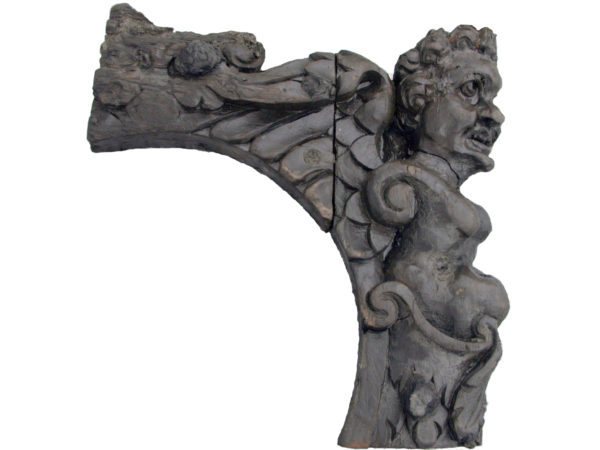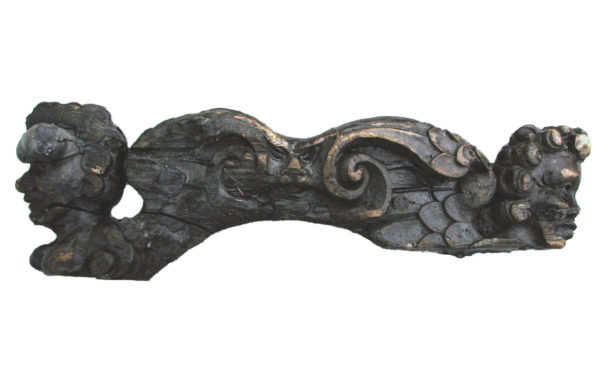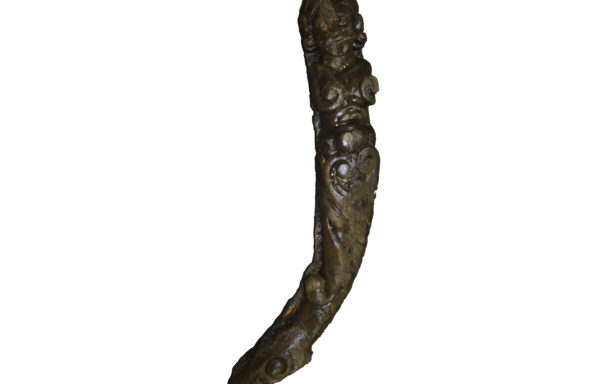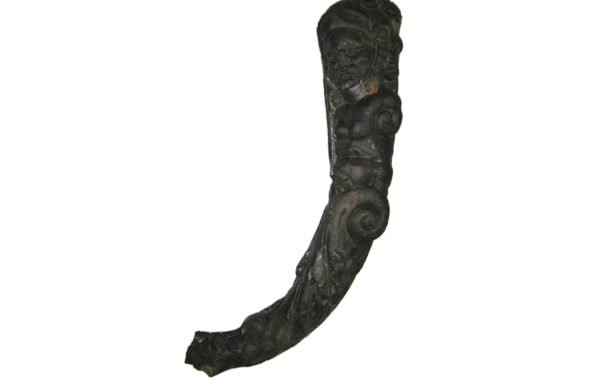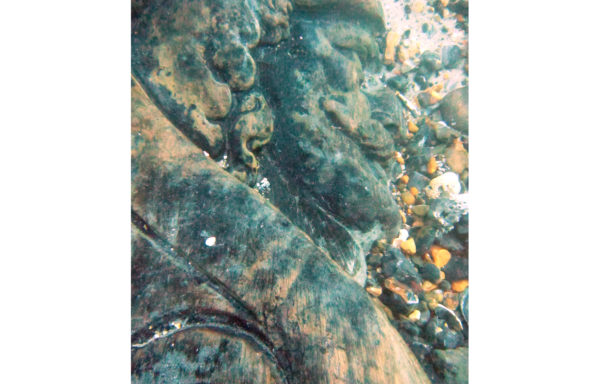Description
The single ‘cherub’ survives with a full face and a body, albeit with a degraded central feature, perhaps originally a ‘swag’ of fruit decoration or something similar (Figure 130) which is paralleled on the Vasa, and perhaps enclosing a mask, as survives on the second pair. He has wings, so that, when photoshopped as a pair, are back-to-back and suggest that he once formed part of a decorative arcade; the surviving pair also suggest reasonable grounds for a similar decorative arcading and may be seen beneath the counter-stern in many depictions of ships of the period (see link below in Oliphant ship portrait, at 0).
His face is extremely distinctive to the point of idiosyncrasy, particularly in the jawline, which suggests perhaps that the design did not originate with the carver, but has its origins in a template, perhaps a print of the subject. Dissemination of artistic models and subjects through the increasing availability of prints is widely attested at the period and is a well-known method of artistic transmission, particularly in an artisan context such as this. TW concurs with this assessment (Pers. comm., Tanja Watson, Data Services Unit, English Heritage, 11.09.2013). Nevertheless, the face is detailed and skilful, an impression of skill reinforced by the fact that they resemble one another so closely, a technical achievement that suggests a certain level of experience (which may have been gained in an ecclesiastical context, as suggested at 0 above). It may also suggest first-hand access to possible templates.
His wings are less skilfully carved, perhaps by a less experienced carver, perhaps a pupil or apprentice, to whom the task would have been assigned, as was normally the practice in many artisan and fine art contexts when less detailed work was required.
